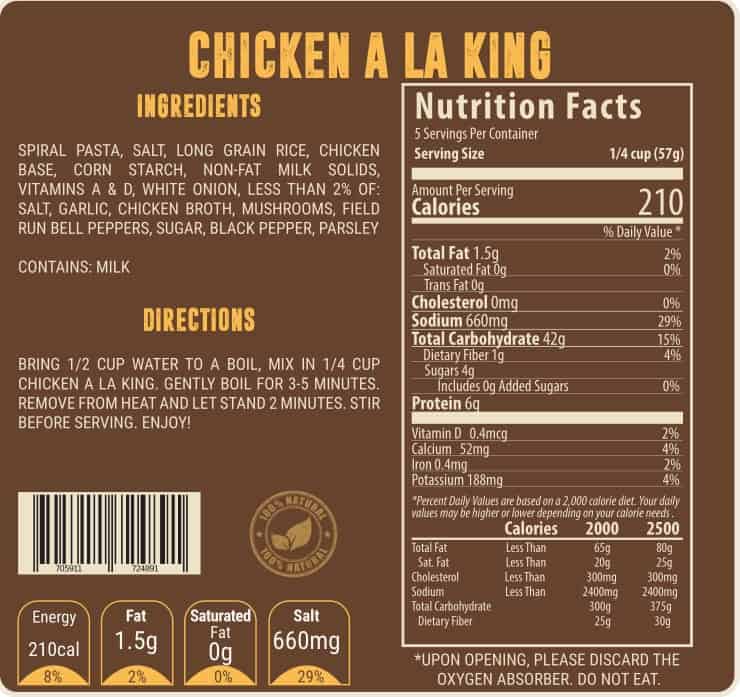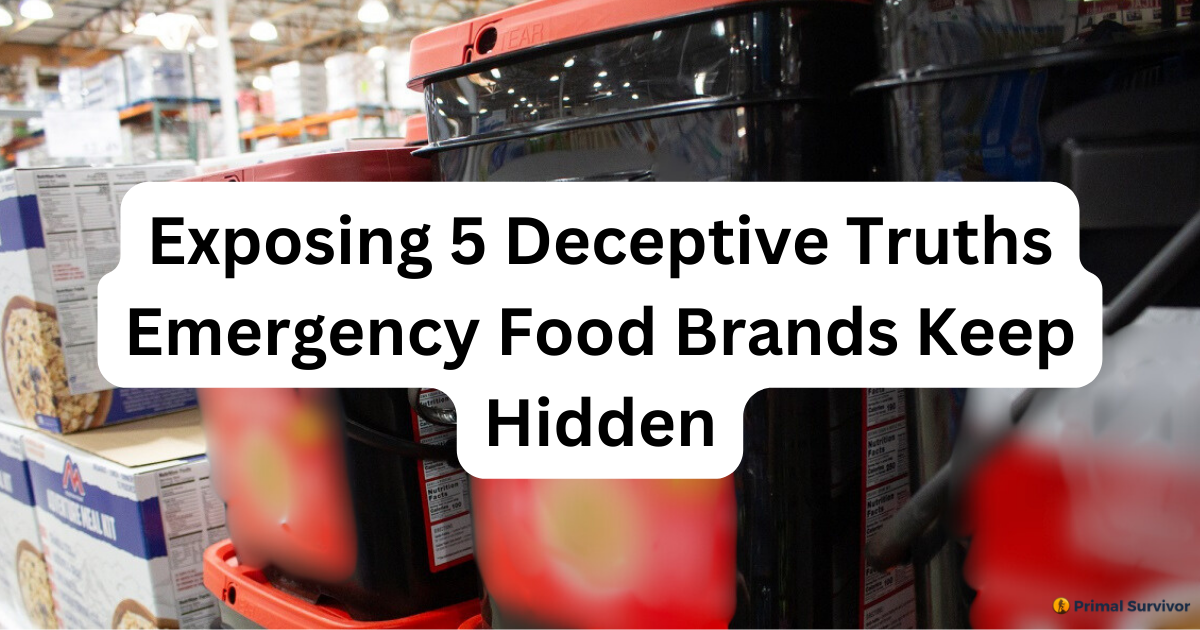In recent years, the market has witnessed an influx of emergency food brands offering pre-packaged meals boasting remarkably long shelf lives.
The convenience of getting prepared quickly has drawn many in, but when you dig deeper, you’ll find these five cunning secrets hiding behind the label.
#1 The meals are just a lot of cheap fillers.
Forget about real meat or even vegetables! Emergency meals mostly contain low-cost ingredients like pasta or rice. Not only are these ingredients cheap, but they also save the brand the need for expensive freeze-drying processes.
This might not be so infuriating, except that emergency meals are EXPENSIVE. You pay a hefty markup for what’s essentially carbs with a hint of sauce and a few freeze-dried veggies thrown in.
#2 There are only 230 calories per serving.

A bucket of 1,320 servings might suggest weeks or even months of sustenance. But the truth lies in the calorie count, usually a mere 230 calories per serving. Do the math, and the apparent great deal becomes a deceptive ploy that could leave you hungry.
Some brands offer “1 week” or “1 month” kits, but be cautious. Even these may provide a meager 1,600 calories daily, insufficient for most adults.
#3 Packing your own long-term food supply is surprisingly easy.
5mil Pick (Best For Most)
Ditch the pricey emergency food kits! You can buy Mylar bags and oxygen absorbers in bundles for remarkably cheap.
With a simple iron to seal the bags, you can replicate the contents of commercial meals at a fraction of the cost. Take control and craft a budget-friendly, personalized emergency food stash.
#4 You have to cook the meals for a LONG time.
The meals are supposed to be for “emergencies.” So, it’s shocking that most emergency meals must be cooked for 20+ minutes!
A few brands have started to fix this problem. Mountain House meals, for example, can be made just by soaking in water. Otherwise, you better ensure you have an emergency stove and lots of fuel!
#5 Nutrients go bad, even if the food doesn’t.
While freeze-dried meals boast a remarkable 25+ year shelf life, the same cannot be said for the included vitamins.
Even with oxygen absorbers, vitamins begin to break down quickly. Heat just accelerates this process.
For those prioritizing nutrition during a crisis, consider alternatives like stockpiling your own multivitamins (a rotating through them regularly!) or cultivating your survival garden.
Don’t let the long shelf life deceive you – be proactive about your nutritional needs in emergencies.

















